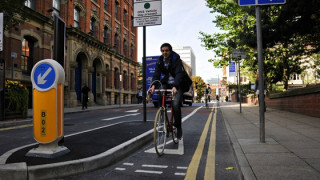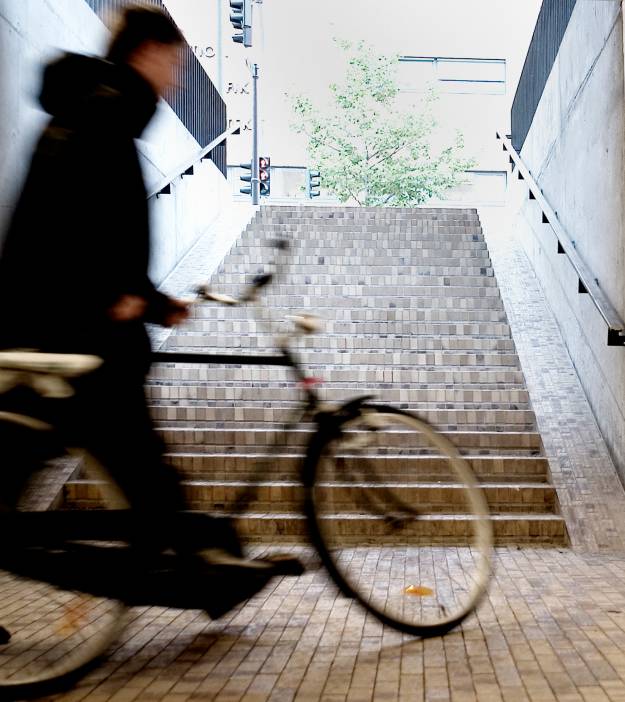Cycling is a safe activity; people are just as likely to injure themselves walking to the shops as they are cycling. However, the same cannot be said when lorries are thrown in the mix.
Statistically, Heavy Goods Vehicles (HGVs) pose a significantly higher risk to cyclists and other vulnerable road users than any other type of vehicle.
HGVs pose the biggest danger in urban environments due to the vast number of junctions and tight corners, increasing the possibility of coming into conflict with other road users. In London, HGVs were involved in 53% of cycling fatalities in 2011 despite making up just 4% of the traffic. A study by Transport for London (TfL) showed that cyclists involved in collisions with HGVs are 78 times more likely to be killed than those hit by a car.
Zero – a startling statistic from Paris
In Paris, there are strict controls on HGV deliveries - this effectively stops them from using the road. The most restrictive times are for the largest and most polluting vehicles which are kept away from roads during peak hours. For example, larger vehicles can only deliver during the hours from 10pm to 7am and medium size vehicles from 10pm to 5pm.
The restrictions mean that haulage companies use smaller, low emission vehicles. These are often newer vehicles with better visibility and are more likely to be designed to modern safety standards. It also encourages the use of ‘consolidation depots’ where loads are shifted from larger to smaller vehicles driven by employees with experience of the city.
In 2011, there were no cycling fatalities in Paris. Zero. There were 16 fatalities in London during this time.
Fatality rates can fluctuate year on year but road traffic incidents involving cyclists in Paris in 2011 were just 8% of the total compared to 15% in London. In both cities this is well above the modal share of cycling (2-3% in both cities) and shows that people are far more likely to be involved in an incident while cycling in London than Paris.
Paris is a safer place to ride a bike (and we think it feels better too) and we believe that it is clearly because, at least in part, due the restrictions on dangerous vehicles.
Cycling on the rise in Dublin
Since 2007 the largest vehicles have been restricted from Dublin city centre. This move was timed to coincide with the opening of the Dublin Port Tunnel which routes traffic from the port to the far edge of the city. A permit scheme allows deliveries to take place but numbers are limited and the route and delivery points must be pre-determined.
The restrictions are designed to improve the living conditions in Dublin and minimise conflict with other road users. Again the restrictions keep large HGVs out of the city centre when the roads are at their busiest. After just one year cycling counts in the city went up between 8% and 30%.
London is doing things backwards
Surprisingly, London takes the opposite approach to both Paris and Dublin by restricting the largest vehicles from entering the city during the night. This forces the most dangerous vehicles to use the road during the rush hours when the majority of cyclists are on the road.
Night time restrictions (9pm-7am and on Sundays) have been in place since 1985 and are designed to limit environmental impacts and noise pollution for residents. While this is a valid reason, it means HGVs have no choice but to use the road during the day time.
London, like Paris, is heavily reliant on the construction industry which needs to operate during daylight hours. It is also a ‘residential’ city meaning large vehicles are needed for domestic use such as waste disposal and building works.
However, there are no restrictions whatsoever during the day when the roads contain most cyclists and no policy to encourage freight to be taken into town by smaller vehicles with better cab designs.
Mary Bowers, a journalist for The Times newspaper, was hit by a HGV driver who had previous ‘working-hours’ offences and was on the telephone at the time getting directions. At the time of writing, Mary is still in a coma.
Options for the future
Boris Johnson promised to, ‘study the experience from cities such as Paris and Dublin…’
Following the death of Dr Katherine Giles in April 2013, the Mayor’s Cycling Commissioner Andrew Gilligan and Minister for Transport Stephen Hammond MP also publically stated that they would look at options for improving HGV safety, including use of restrictions. Both Paris and Dublin have shown that sensible restrictions can improve safety and maintain cities economic competiveness.
The London Cycle Campaign (LCC) and TfL have been doing excellent work to improve driver training and ensure public contractors use the safest vehicles but this work is limited by legislation. Current loopholes mean that older vehicles do not need the latest mirrors that improve the drivers field of vision, certain vehicles do not require side bars that push cyclists away from wheels if they are hit, there are currently no requirements to fit sensors which inform the driver if a cyclist is nearby and driver training does not include the latest cycle awareness courses (see our article on Conway who are leading the way in this field).
Vehicle design also needs improving. While British Cycling supports all the good work that TfL, the London Cycling Campaign and the Metropolitan Police are doing in projects like ‘Changing Places’, the question needs asking, “why do we build cabs that have blind spots in the first place?” Cabs that prevent drivers seeing people on bikes are not fit for the purpose of urban driving.
The majority of HGVs do not allow the driver a direct line of sight to cyclists situated near the vehicle and due to their size, when they are involved in a collision with a cyclist, it is more likely to lead to a life threatening injury, or worse. This makes them fundamentally unsuitable for city driving.
We need rapid solutions to tackle this tragic problem and British Cycling is keen to see the Mayor of London act on his promise. This is also highly relevant for other large cities such as Manchester, Liverpool, Oxford and Cambridge who have all recently bid for money to increase levels of cycling.













